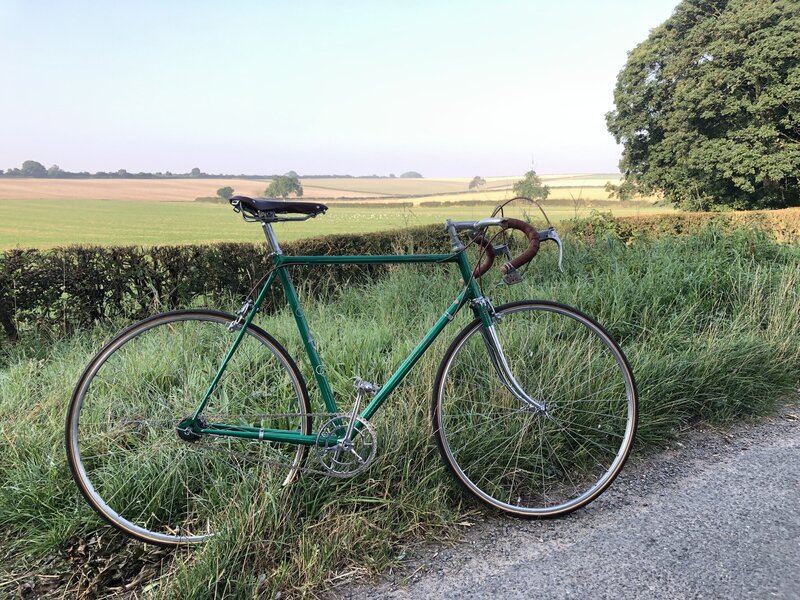Peachy!
Retrobike Rider
BoTM Winner
Gold Trader
rBoTM Triple Crown
rBotM Winner
98+ BoTM Winner
Claud Butler Fan
VCC Claud Butler ME
- Feedback
- View
Morning,
I popped out for a pootle on my 1954 Claud Butler Jubilee Special, first time since loosing a lot of weight (5st!)
Positives; The Brooks Swallow is less painful , and my lower arms don’t ach as much (less upper body weight?)
, and my lower arms don’t ach as much (less upper body weight?)
Negatives; I find myself running out of gears.
It’s got a 4 speed wide ratio Sturmey hub with 18t x 44t and on this run I pretty much only used 4th & found myself often freewheeling (the Fiamme rims do roll so well)
I’d rather like to keep the 44t Chater Lea although I do have a nice 46t Williams I could swap it out with, but I’m thinking I might change the cog to 16t instead.
Can anyone advise what might be the better option, 18x46 or 16x44? (combined with a 4 speed close ratio Sturmey hub gear)
I popped out for a pootle on my 1954 Claud Butler Jubilee Special, first time since loosing a lot of weight (5st!)
Positives; The Brooks Swallow is less painful
Negatives; I find myself running out of gears.
It’s got a 4 speed wide ratio Sturmey hub with 18t x 44t and on this run I pretty much only used 4th & found myself often freewheeling (the Fiamme rims do roll so well)
I’d rather like to keep the 44t Chater Lea although I do have a nice 46t Williams I could swap it out with, but I’m thinking I might change the cog to 16t instead.
Can anyone advise what might be the better option, 18x46 or 16x44? (combined with a 4 speed close ratio Sturmey hub gear)

Last edited: